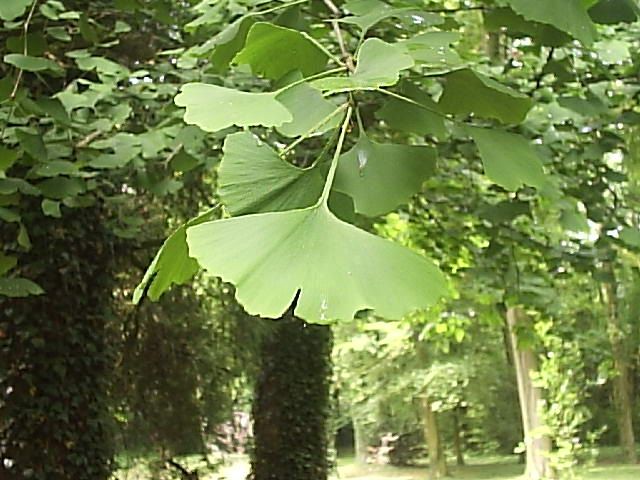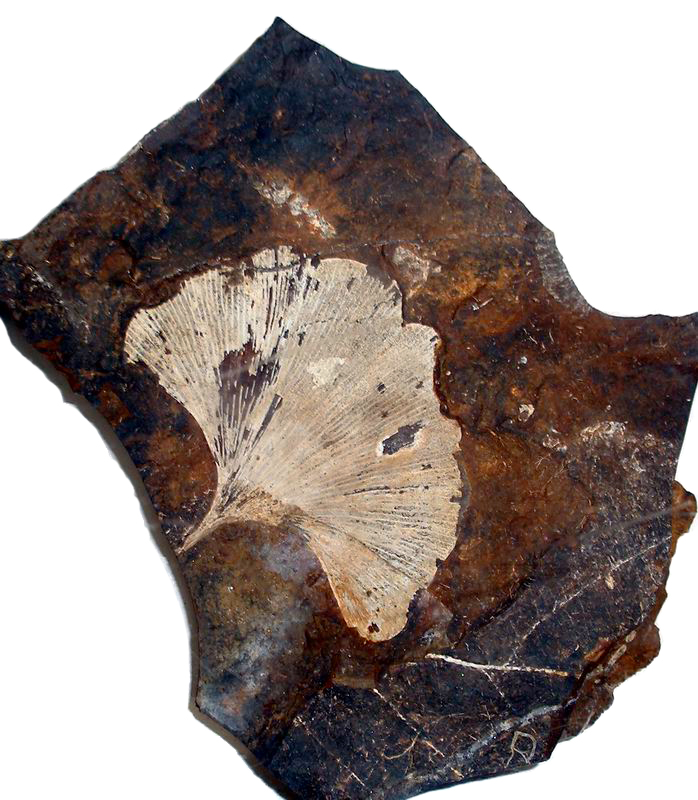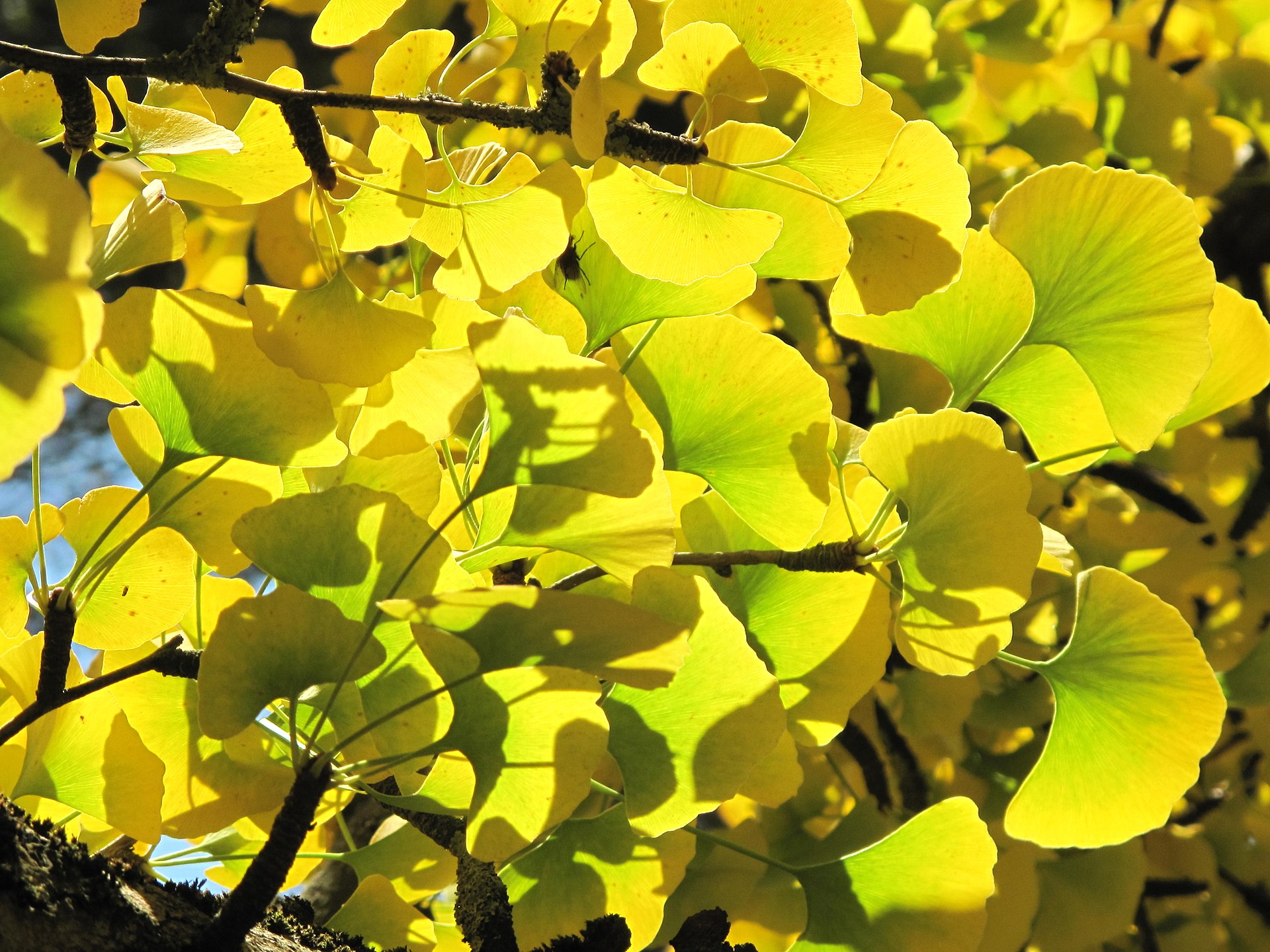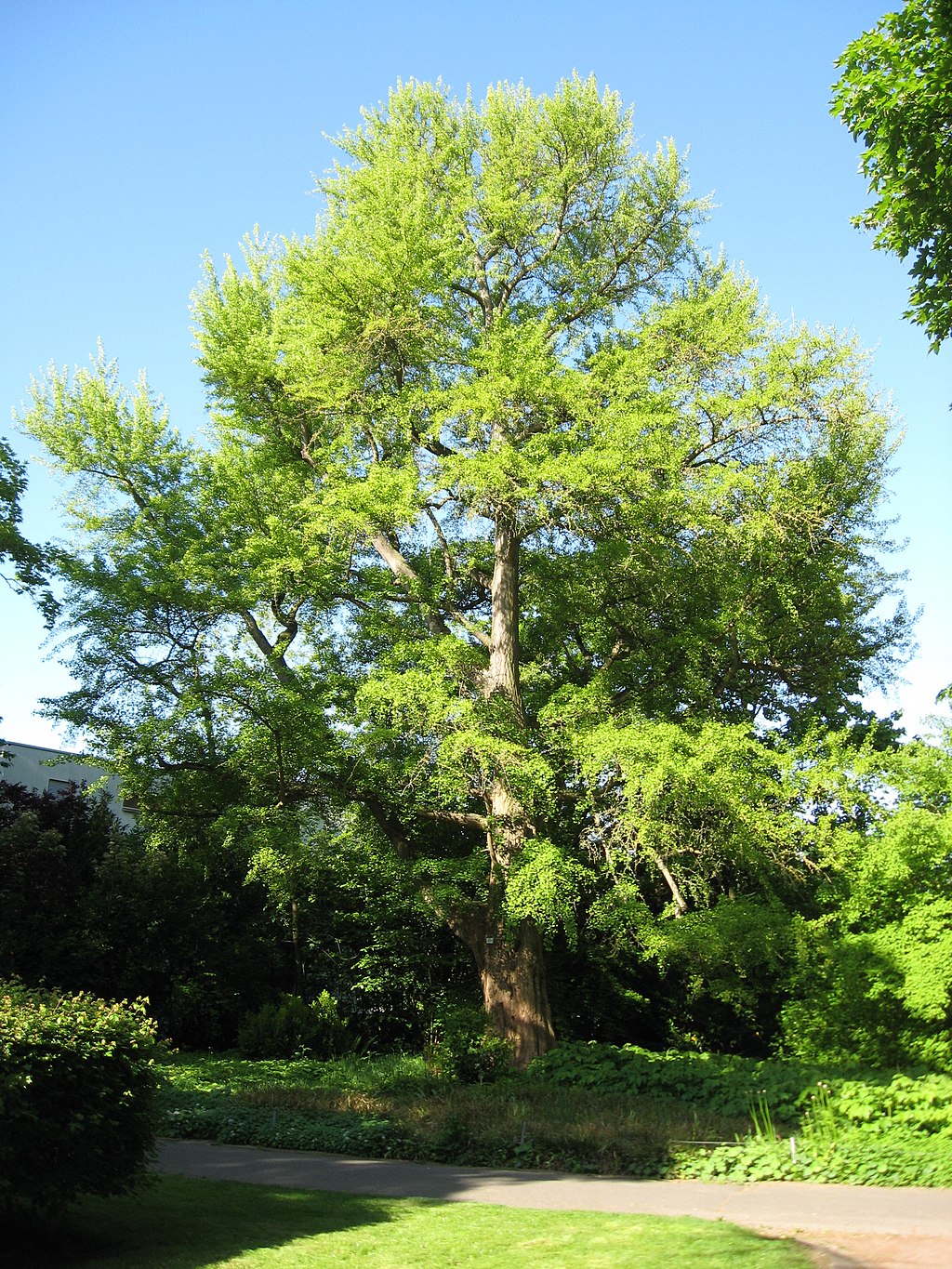2.20: Ginkgo
- Page ID
- 70370
\( \newcommand{\vecs}[1]{\overset { \scriptstyle \rightharpoonup} {\mathbf{#1}} } \)
\( \newcommand{\vecd}[1]{\overset{-\!-\!\rightharpoonup}{\vphantom{a}\smash {#1}}} \)
\( \newcommand{\dsum}{\displaystyle\sum\limits} \)
\( \newcommand{\dint}{\displaystyle\int\limits} \)
\( \newcommand{\dlim}{\displaystyle\lim\limits} \)
\( \newcommand{\id}{\mathrm{id}}\) \( \newcommand{\Span}{\mathrm{span}}\)
( \newcommand{\kernel}{\mathrm{null}\,}\) \( \newcommand{\range}{\mathrm{range}\,}\)
\( \newcommand{\RealPart}{\mathrm{Re}}\) \( \newcommand{\ImaginaryPart}{\mathrm{Im}}\)
\( \newcommand{\Argument}{\mathrm{Arg}}\) \( \newcommand{\norm}[1]{\| #1 \|}\)
\( \newcommand{\inner}[2]{\langle #1, #2 \rangle}\)
\( \newcommand{\Span}{\mathrm{span}}\)
\( \newcommand{\id}{\mathrm{id}}\)
\( \newcommand{\Span}{\mathrm{span}}\)
\( \newcommand{\kernel}{\mathrm{null}\,}\)
\( \newcommand{\range}{\mathrm{range}\,}\)
\( \newcommand{\RealPart}{\mathrm{Re}}\)
\( \newcommand{\ImaginaryPart}{\mathrm{Im}}\)
\( \newcommand{\Argument}{\mathrm{Arg}}\)
\( \newcommand{\norm}[1]{\| #1 \|}\)
\( \newcommand{\inner}[2]{\langle #1, #2 \rangle}\)
\( \newcommand{\Span}{\mathrm{span}}\) \( \newcommand{\AA}{\unicode[.8,0]{x212B}}\)
\( \newcommand{\vectorA}[1]{\vec{#1}} % arrow\)
\( \newcommand{\vectorAt}[1]{\vec{\text{#1}}} % arrow\)
\( \newcommand{\vectorB}[1]{\overset { \scriptstyle \rightharpoonup} {\mathbf{#1}} } \)
\( \newcommand{\vectorC}[1]{\textbf{#1}} \)
\( \newcommand{\vectorD}[1]{\overrightarrow{#1}} \)
\( \newcommand{\vectorDt}[1]{\overrightarrow{\text{#1}}} \)
\( \newcommand{\vectE}[1]{\overset{-\!-\!\rightharpoonup}{\vphantom{a}\smash{\mathbf {#1}}}} \)
\( \newcommand{\vecs}[1]{\overset { \scriptstyle \rightharpoonup} {\mathbf{#1}} } \)
\( \newcommand{\vecd}[1]{\overset{-\!-\!\rightharpoonup}{\vphantom{a}\smash {#1}}} \)
\(\newcommand{\avec}{\mathbf a}\) \(\newcommand{\bvec}{\mathbf b}\) \(\newcommand{\cvec}{\mathbf c}\) \(\newcommand{\dvec}{\mathbf d}\) \(\newcommand{\dtil}{\widetilde{\mathbf d}}\) \(\newcommand{\evec}{\mathbf e}\) \(\newcommand{\fvec}{\mathbf f}\) \(\newcommand{\nvec}{\mathbf n}\) \(\newcommand{\pvec}{\mathbf p}\) \(\newcommand{\qvec}{\mathbf q}\) \(\newcommand{\svec}{\mathbf s}\) \(\newcommand{\tvec}{\mathbf t}\) \(\newcommand{\uvec}{\mathbf u}\) \(\newcommand{\vvec}{\mathbf v}\) \(\newcommand{\wvec}{\mathbf w}\) \(\newcommand{\xvec}{\mathbf x}\) \(\newcommand{\yvec}{\mathbf y}\) \(\newcommand{\zvec}{\mathbf z}\) \(\newcommand{\rvec}{\mathbf r}\) \(\newcommand{\mvec}{\mathbf m}\) \(\newcommand{\zerovec}{\mathbf 0}\) \(\newcommand{\onevec}{\mathbf 1}\) \(\newcommand{\real}{\mathbb R}\) \(\newcommand{\twovec}[2]{\left[\begin{array}{r}#1 \\ #2 \end{array}\right]}\) \(\newcommand{\ctwovec}[2]{\left[\begin{array}{c}#1 \\ #2 \end{array}\right]}\) \(\newcommand{\threevec}[3]{\left[\begin{array}{r}#1 \\ #2 \\ #3 \end{array}\right]}\) \(\newcommand{\cthreevec}[3]{\left[\begin{array}{c}#1 \\ #2 \\ #3 \end{array}\right]}\) \(\newcommand{\fourvec}[4]{\left[\begin{array}{r}#1 \\ #2 \\ #3 \\ #4 \end{array}\right]}\) \(\newcommand{\cfourvec}[4]{\left[\begin{array}{c}#1 \\ #2 \\ #3 \\ #4 \end{array}\right]}\) \(\newcommand{\fivevec}[5]{\left[\begin{array}{r}#1 \\ #2 \\ #3 \\ #4 \\ #5 \\ \end{array}\right]}\) \(\newcommand{\cfivevec}[5]{\left[\begin{array}{c}#1 \\ #2 \\ #3 \\ #4 \\ #5 \\ \end{array}\right]}\) \(\newcommand{\mattwo}[4]{\left[\begin{array}{rr}#1 \amp #2 \\ #3 \amp #4 \\ \end{array}\right]}\) \(\newcommand{\laspan}[1]{\text{Span}\{#1\}}\) \(\newcommand{\bcal}{\cal B}\) \(\newcommand{\ccal}{\cal C}\) \(\newcommand{\scal}{\cal S}\) \(\newcommand{\wcal}{\cal W}\) \(\newcommand{\ecal}{\cal E}\) \(\newcommand{\coords}[2]{\left\{#1\right\}_{#2}}\) \(\newcommand{\gray}[1]{\color{gray}{#1}}\) \(\newcommand{\lgray}[1]{\color{lightgray}{#1}}\) \(\newcommand{\rank}{\operatorname{rank}}\) \(\newcommand{\row}{\text{Row}}\) \(\newcommand{\col}{\text{Col}}\) \(\renewcommand{\row}{\text{Row}}\) \(\newcommand{\nul}{\text{Nul}}\) \(\newcommand{\var}{\text{Var}}\) \(\newcommand{\corr}{\text{corr}}\) \(\newcommand{\len}[1]{\left|#1\right|}\) \(\newcommand{\bbar}{\overline{\bvec}}\) \(\newcommand{\bhat}{\widehat{\bvec}}\) \(\newcommand{\bperp}{\bvec^\perp}\) \(\newcommand{\xhat}{\widehat{\xvec}}\) \(\newcommand{\vhat}{\widehat{\vvec}}\) \(\newcommand{\uhat}{\widehat{\uvec}}\) \(\newcommand{\what}{\widehat{\wvec}}\) \(\newcommand{\Sighat}{\widehat{\Sigma}}\) \(\newcommand{\lt}{<}\) \(\newcommand{\gt}{>}\) \(\newcommand{\amp}{&}\) \(\definecolor{fillinmathshade}{gray}{0.9}\)Gingko (Ginkgo biloba) is a commonly planted tree that many have probably seen but may not have distinguished from other trees. In spite of the fact that its form is very similar to most trees it has a number of distinct features. In particular, most trees are flowering plants (angiosperms) or conifers, ginkgo is neither!

Taxonomy and phylogeny
Gingko is unique in all of life's diversity because it is the only species that is the sole member of an entire phylum. While there are numerous examples of a single species as the sole member of a genus, and a few examples of a species as a sole member of a family, still fewer examples of a species being the sole member of an order, etc., etc., there is only one example of a species being the sole member of a phylum, in this case the Ginkgophyta. What this means is that ginkgo is distinctly different in a number of ways from all other plants, and in particular from all other seed plants. Generally seed plants are divided into five groups, one of which is the Ginkgophyta; the others are: flowering plants, conifers, cycads, and gnetophytes. Ginkgo is an ancient group—the figures above shows a modern leaf beside a fossil revealed in 60 million year old rock.

The genus is over four times this age with recognizable leaves in 250 million year old deposits.

Structure
Ginkgo looks like a typical tree and, from a distance, because of its broad leaves, would be considered to be more closely related to angiosperm trees like oak and maple than to conifers like pine and hemlock. However, the wood of ginkgo, like that of pines, hemlock and all conifers, contains no vessels or fibers, only tracheids and parenchyma cells. Gingko, like some conifers (e.g., larch), has 'short shoots' (very slow growing shoots) and 'long shoots' (faster growing shoots). The short shoots look like spurs on the stems and make identifying ginkgo easy in the winter.

Sex and reproduction
Ginkgo produces seeds that develop in the female 'cones' , which resemble olive fruits. The species is dioecious, i.e. it has separate male and female plants. Male plants produce pollen in cones. The pollen is dispersed to female cones by the wind. Like Ephedra in the Gnetophyta group, the female cones of ginkgo produce a drop of liquid that helps to capture pollen. This drop, containing pollen, is pulled into the cone by capillary action as the drop dries. Once in the cone, the opening to the outside is closed and the pollen germinates and produces a small, fungal-like structure, the male gametophyte, which acquires nutrition from tissues of the ovule. The male gametophyte matures and releases mobile, flagellated sperm into the liquid that is present in the 'canal' at the end of the ovule. These swim to the female gametophyte and fertilize the egg to form a zygote. Flagellated sperm are present in all ferns, mosses, and liverworts but are extremely rare in seed plants, being found only in Gingko, the cycads and some gnetophytes.
Matter and energy
Ginkgo is a typical photosynthetic autotroph.
Interactions
Ginkgo are extensively planted as a shade tree. It has an appealing form and grows well in a variety of habitats, including urban ones where pollution and asphalt produce an environment where many trees fare poorly. A significant , but not well explained , feature of the plant , is that it grows well when planted but does not establish itself on its own. Many workers feel that there are no 'naturally-occurring' ginkgos, i.e. that it is only found where it has been planted and its current existence is due solely to the fact that humans have been planting them for the last 10, 000 years, most of that time in China, but more recently world-wide.
The 'fruits' (female cones) of ginkgo produce a foul smell (butyric acid) when ripening. In the past the female trees were sometimes removed when they were old enough to produce fruit but modern horticulture has allowed plants to be cloned and most of the trees now planted are male.
The leaves of ginkgo are thought by some to be an herbal medicine that improves brain function. Conclusive evidence of this is lacking.


